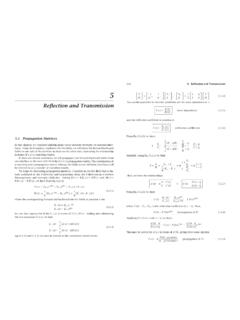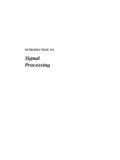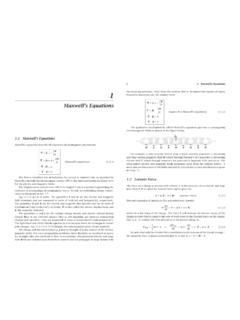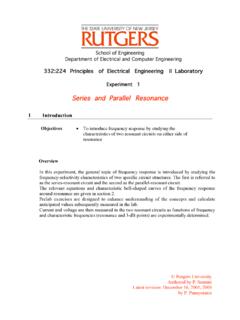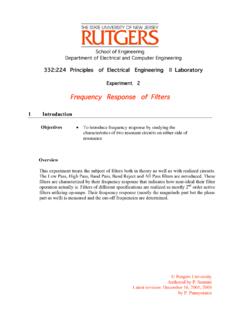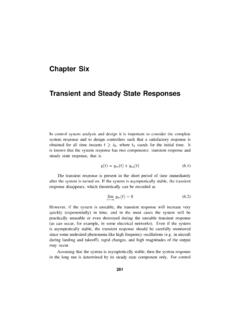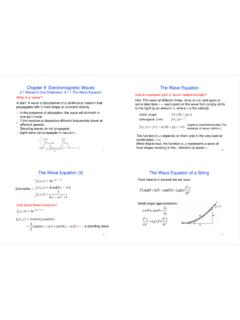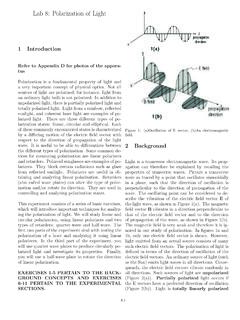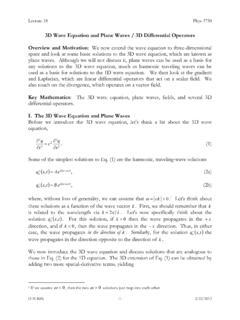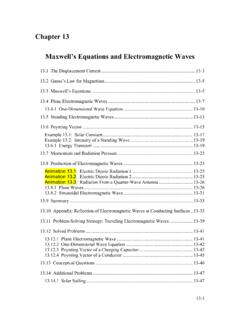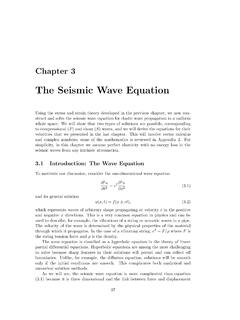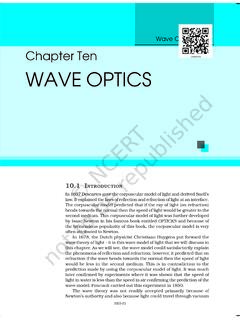Transcription of Uniform Plane Waves - Rutgers University
1 38 2. Uniform Plane Waves Because also z Ez = 0, it follows that Ez must be a constant, independent of z, t. 2 Excluding static solutions, we may take this constant to be zero. Similarly, we have Hz = 0. Thus, the elds have components only along the x, y directions: E(z, t) = x Ex (z, t)+y Ey (z, t). Uniform Plane Waves H(z, t) = x Hx (z, t)+y Hy (z, t). (transverse elds) ( ). These elds must satisfy Faraday's and Ampe re's laws in Eqs. ( ). We rewrite these equations in a more convenient form by replacing and by.
2 1 1 . = , = , where c= , = ( ). c c . Thus, c, are the speed of light and characteristic impedance of the propagation medium. Then, the rst two of Eqs. ( ) may be written in the equivalent forms: E 1 H. Uniform Plane Waves in Lossless Media z = . z c t ( ). H 1 E. The simplest electromagnetic Waves are Uniform Plane Waves propagating along some z =. xed direction, say the z-direction, in a lossless medium { , }. z c t The assumption of uniformity means that the elds have no dependence on the The rst may be solved for z E by crossing it with z.
3 Using the BAC-CAB rule, and transverse coordinates x, y and are functions only of z, t. Thus, we look for solutions noting that E has no z-component, we have: of Maxwell's equations of the form: E(x, y, z, t)= E(z, t) and H(x, y, z, t)= H(z, t).. E E E E. Because there is no dependence on x, y, we set the partial derivatives x = 0 and z z = (z z ) z z =. z z z z y = 0. Then, the gradient, divergence, and curl operations take the simpli ed forms: where we used z z E = z Ez = 0 and z z = 1. It follows that Eqs. ( ) may be Ez E Ey Ex replaced by the equivalent system: = z , E= , E = z = x + y.
4 Z z z z z E 1 . = ( H z ). Assuming that D = E and B = H , the source-free Maxwell's equations become: z c t ( ). 1 E. E H ( H z )= . H z = z c t E = z t t Now all the terms have the same dimension. Eqs. ( ) imply that both E and H. H E. E z = satisfy the one-dimensional wave equation. Indeed, differentiating the rst equation H= z t t ( ) with respect to z and using the second, we have: Ez E=0 =0. z 2 E 1 1 2 E. 2. = ( H z )= 2 or, z c t z c t2. H=0 Hz =0 . z 2 1 2. E(z, t)= 0 (wave equation) ( ). An immediate consequence of uniformity is that E and H do not have components z2 c2 t2.
5 Along the z-direction, that is, Ez = Hz = 0. Taking the dot-product of Ampe re's law and similarly for H. Rather than solving the wave equation, we prefer to work directly with the unit vector z , and using the identity z (z A)= 0, we have: with the coupled system ( ). The system can be decoupled by introducing the so- called forward and backward electric elds de ned as the linear combinations: H E Ez z z = z =0 =0. z t t 1. E+ = (E + H z ). 2. The shorthand notation x stands for . (forward and backward elds) ( ).
6 X 1. E = (E H z ). 2. Uniform Plane Waves in Lossless Media 39 40 2. Uniform Plane Waves Component-wise, these are: Inserting these into the inverse formula ( ), we obtain the most general solution of ( ), expressed as a linear combination of forward and backward Waves : 1 1. Ex = (Ex Hy ) , Ey = (Ey Hx ) ( ). 2 2. E(z, t) = F(z ct)+G(z + ct). We show next that E+ (z, t) corresponds to a forward-moving wave, that is, moving ( ). 1. towards the positive z-direction, and E (z, t), to a backward-moving wave. Eqs. ( ) H(z, t) = z F(z ct) G(z + ct).
7 Can be inverted to express E, H in terms of E+ , E . Adding and subtracting them, and using the BAC-CAB rule and the orthogonality conditions z E = 0, we obtain: The term E+ (z, t)= F(z ct) represents a wave propagating with speed c in the positive z-direction, while E (z, t)= G(z+ct) represents a wave traveling in the negative E(z, t) = E+ (z, t)+E (z, t). z-direction. 1 ( ). To see this, consider the forward eld at a later time t + t. During the time interval H(z, t) = z E+ (z, t) E (z, t). t, the wave moves in the positive z-direction by a distance z = c t.
8 Indeed, we have: In terms of the forward and backward elds E , the system of Eqs. ( ) decouples E+ (z, t + t) = F z c(t + t) = F(z c t ct). into two separate equations: E+ (z, t + t)= E+ (z z, t). E+ (z z, t) = F (z z) ct = F(z c t ct). E+ 1 E+. = . z c t This states that the forward eld at time t + t is the same as the eld at time t, ( ). E 1 E but translated to the right along the z-axis by a distance z = c t. Equivalently, the =+ eld at location z + z at time t is the same as the eld at location z at the earlier time z c t t t = t z/c, that is, Indeed, using Eqs.
9 ( ), we verify: E+ (z + z, t)= E+ (z, t t). 1 1 E 1 . (E H z )= ( H z ) = (E H z ). z c t c t c t Similarly, we nd that E (z, t + t)= E (z + z, t), which states that the backward eld at time t + t is the same as the eld at time t, translated to the left by a distance Eqs. ( ) can be solved by noting that the forward eld E+ (z, t) must depend z. Fig. depicts these two cases. on z, t only through the combination z ct (for a proof, see Problem ) If we set E+ (z, t)= F(z ct), where F( ) is an arbitrary function of its argument = z ct, then we will have: E+ F( ) F( ).
10 = F(z ct)= =. z z z E+ 1 E+. = . E+ F( ) F( ) z c t = F(z ct)= = c t t t . Vectorially, F must have only x, y components, F = x Fx + y Fy , that is, it must be transverse to the propagation direction, z F = 0. Similarly, we nd from the second of Eqs. ( ) that E (z, t) must depend on z, t through the combination z + ct, so that E (z, t)= G(z + ct), where G( ) is an arbitrary (transverse) function of = z + ct. In conclusion, the most general solutions for the Fig. Forward and backward Waves . forward and backward elds of Eqs.
